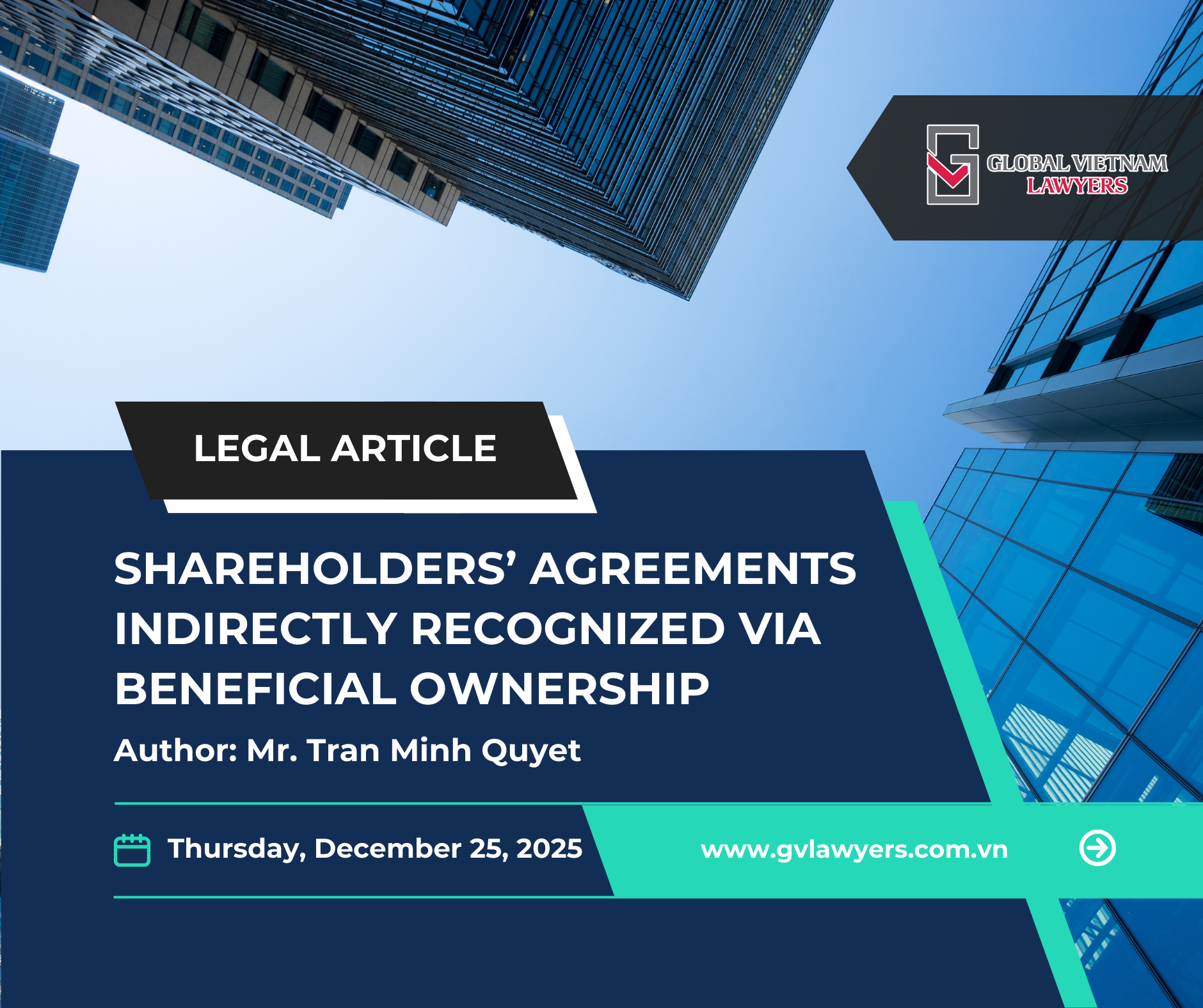The article by Associate Hoang Thi Hoai Thu was published on the Saigon Economic Times page on January 16, 2020 with the title: “Two Critical Points In The Legal Protection Of Minority Shareholders“.
***
The Enterprise Law 2014 creates a mechanism to allow minority shareholders to have the opportunity to assign their personnel to the board of managers of the company, but concurrently, majority shareholders can therefrom dismiss members representing the minority thanks to their overwhelming majority.
BOARD OF MANAGERS WITH PROTECTION OF MINORITY SHAREHOLDERS
In a joint stock company, shareholders own the company but the operation of the company is delegated to the board of directors. Shareholders convene the General Meeting of Shareholders once or twice a year, and then dissolve it, while the board of directors manages the company permanently. This mechanism creates the possibility of abusing power from the board of directors and the company’s management staff, going against the owners’ benefits.
To limit the abuse of the board of directors, the law allows shareholders to elect the Board of Managers (BOM) as a permanent representative agency of shareholders to manage the company and supervise the board of directors.
Due to the representative role of the will of all shareholders, the election of the BOM is conducted according to a specific mechanism of cumulative voting. Under this mechanism, the total number of votes of shareholders will be multiplied by in proportion to the number of owned shares and the number of elected BOM members and shareholders have the right to give all or part of their votes to their selected candidate. The election winner will be determined according to the number of votes from high to low without requiring any percentage (65% or 51%) as otherwise decided by the General Meeting of Shareholders. The cumulative voting is done only once and thus increases the possibility for minority shareholders to appoint their personnel to the BOM because majority shareholders as well as minority shareholders may only use the one-off right to vote.
Due to such an important role, the shareholders who take hold of the BOM will take hold of the board of directors and thereby control the company. The struggle for the BOM has been frequent and fierce, especially in the tenure transition period. This is the time when we see the shortcomings of the Enterprise Law 2014 in protecting minority shareholders. Two vital weaknesses of the Enterprise Law 2014 include (1) Tenure of the BOM members and (2) Regulations on the dismissal of the BOM members.
WHOSE IS THE TENURE?
At present, there is a common but harmful misunderstanding in relation to the BOM tenure. Such misunderstanding stems from Article 109 of the 2005 Enterprise Law, namely “the tenure of the Board of Managers is five years. The tenure of a member of the Board of Managers will not exceed five years, etc.” Thus, at the end of the term, the BOM members will be re-elected at the same time.
However, the 2014 Enterprise Law has changed the approach, whereby the tenure will be calculated for each member of the Board of Directors. Article 150 of the 2014 Enterprise Law stipulates: “The tenure of the members of the board of managers and its independent members must not exceed five years and may be re-elected with an unlimited number of tenures, etc.” This provision is understood that the tenure of the BOM members will be five years, but the time of start and end of each member’s tenure is different because they can be elected at different times. In other words, a relevant change in the Enterprise Law 2014 results in the fact that the BOM will be separately divided to be elected in several times. With the advantage over votes, majority shareholders easily win such elections to assign their candidates to the BOM. Where there are such several elections, the cumulative voting mechanism is no longer effective in protecting minority shareholders. And the opportunity for minority shareholders to assign their personnel to the BOM will be lower, resulting in the risk of lacking the transparency in corporate governance.
ANY VOTING IS CUMULATIVE, BUT NEITHER ANY DISMISSAL IS
The BOM members are elected by the cumulative voting mechanism, but it is noteworthy that the dismissal is carried out under a simple voting mechanism.
Unless otherwise prescribed by the charter, the dismissal of a BOM member will generally be approved when 51% of the shareholders attending the General Meeting of Shareholders agree. The 2014 Enterprise Law does not require shareholders to dismiss only members whom they previously nominated or supported. When a shareholder or a group of shareholders holding more than 51% of the voting shares, they have the right to dismiss any BOM members, including members who are not nominated by them.
Thus, through cumulative voting, minority shareholders may have the opportunity to assign their personnel to the BOM at the start of the tenure, but later, members nominated by minority shareholders will suffer any dismissal requested by majority shareholders. This dismissal is undoubtedly approved by the General Meeting of Shareholders because it is in the hands of the majority shareholders.
Overall, the efforts by minority shareholders to make their personnel serve on the BOM succeed in the early stages but fail in the long run.
AWAITING THE DRAFT AMENDED LAW
Currently, the amended Enterprise Law 2014 is being drafted and seeking consultation. From the said analysis and with the desire to enhance the protection for minority shareholders, it is time to review the provisions on the in the Enterprise Law 2014 and, if necessary, to return to the BOM tenure mechanism under the 2005 Enterprise Law. At the same time, it is recommended to limit the possibility of dividing down the BOM to vote several times as well as restrict the possibilities for major shareholders to dismiss BOM members nominated by minority shareholders in the corresponding tenure.









